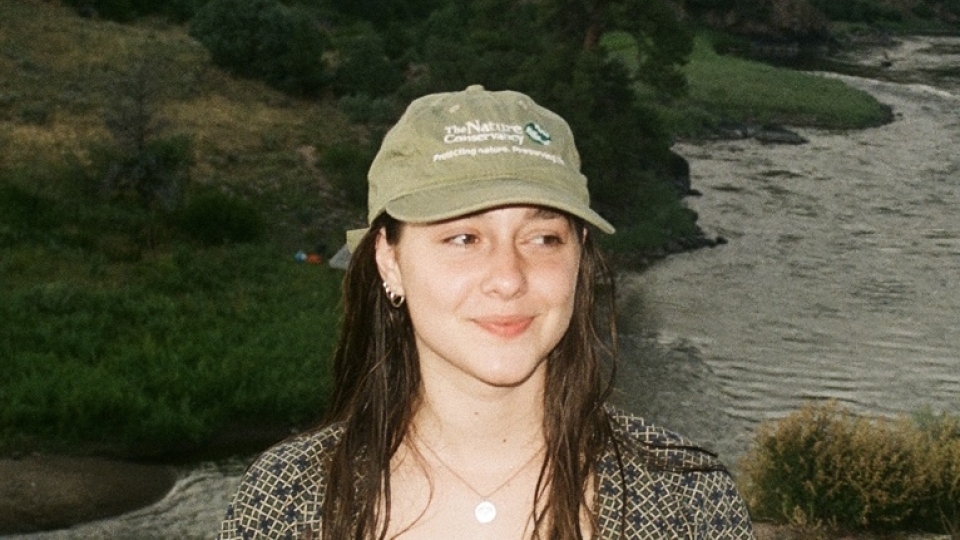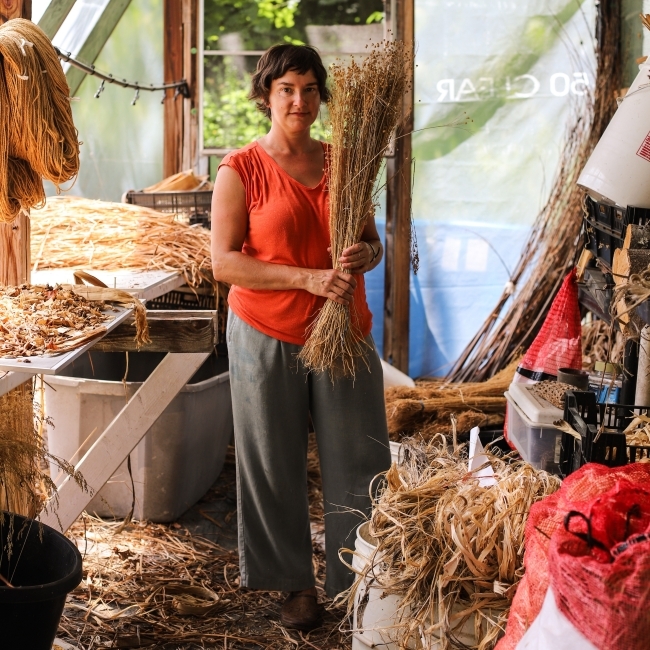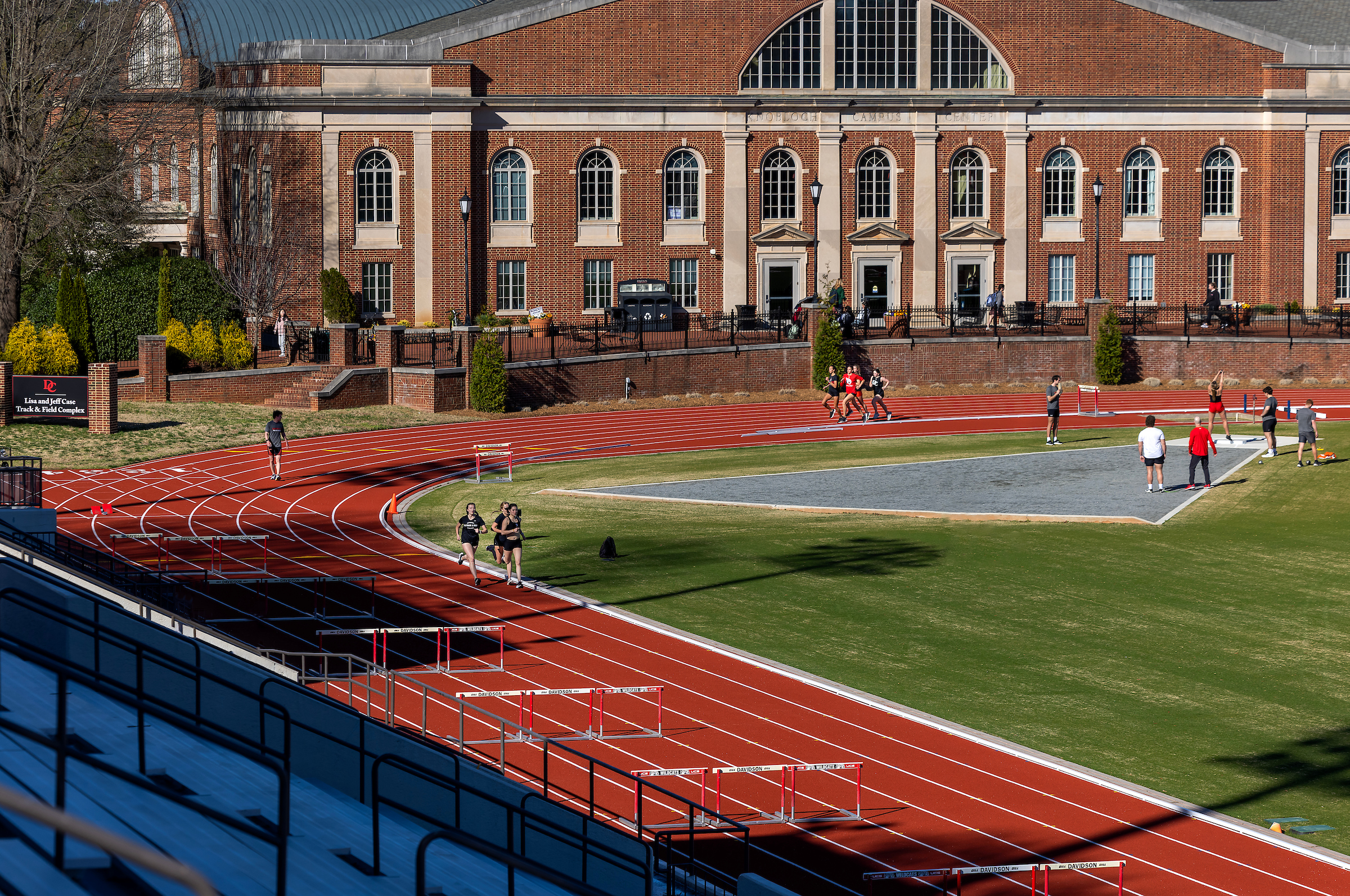My Davidson | A Student Blog Pursuing a Senior Capstone in Studio Art and Digital Screen Media Studies
May 16, 2024

Claire Begalla '24
Recent graduate Claire Begalla ’24 reflects on the work done to complete two senior capstones and the ways her work tapped into all areas of her liberal arts education including anthropology, environmental studies, art, community-building and art history.
About the Author
Claire Begalla ’24 (she/they) is a double major in studio art and digital screen media studies from DeLand, Florida.
Since graduating from Davidson in fall 2023, Claire has worked as an advisory and appraisal assistant for an art consultancy and as a registrar intern at the Mint Museum in Charlotte, North Carolina. They now work as a full time Advisory and Appraisal Associate for the consultancy, Arcadia Art Consultancy, run by Davidson alum Kait Marley '13.
“Why Davidson? I fell in love with the trees on campus.”
Capstones at Davidson can look very different for all majors.
As a double major, I completed two senior capstone projects. For my studio art major, I exhibited my works at the Van Every / Smith Galleries. For my Digital and Screen Media Studies major, I created a visual ethnography on the herbalist community in Southern Appalachia.
Flipping through my final visual ethnography
Through the creation of a visual ethnography, I sought to demonstrate—both through words and material—how particular plants, and plant-human relationships, reflect the moral values of individual herbalists. My process involved photographing and interviewing herbalists, creating paper from kudzu, crafting a book cover from birch bark, cyanotyping my photographs, and binding them with kudzu fibers. The undertaking of this visual ethnography allowed me to tap into almost all areas of my liberal arts education at Davidson—anthropology, environmental science, bookmaking, printmaking, and art history.

Making paper from banana fibers (pre kudzu experimentation)
Arriving at the final project direction took months of interviews, conferences, and workshops. I finally came to the focus of my project after working with an herbalist/papermaker in Asheville over the summer before my last semester at Davidson. Though papermaking had long been an interest of mine, it was her dedication to exploring the intersection between plants and craft that compelled me to enroll in her workshop. Together, we crafted paper from kudzu vines. Kudzu is an abundant invasive species in the U.S. that is native in Japan and Southeast Asia. I was inspired to use the kudzu plant not only for its invasive nature, but also because of its abilities to be used for medicine.

Alyssa Sacora, a crafts person exploring plant-based mediums in the form of papermaking, book arts, basketry and natural dyes, with plant fibers
With our hands soaked in fermenting fibers, we spoke for hours together about plants, spirituality, and ways of being. These kinds of conversations were what I experienced throughout my interviews with herbalists and they provided a sense of connection that I had felt was missing in my solitary artist practice.

Joe Hollis at Mountain Gardens
Although my capstone project began with the intention to develop a digital resource, as I delved deeper into the world of herbalism, I wanted to mirror the intentional, tangible interactions that herbalists have with plants in my own work. To authentically depict the community I intended to showcase in my book, it became evident that fostering a direct, material connection to my creation was essential. This approach would allow me to craft a digital artifact that resonates more deeply with a broader audience. In a blend of traditional and modern mediums, the handmade book concludes with a QR code that leads readers to an accompanying website. This dual engagement ensures that viewers experience both the tangible and digital realms to fully grasp the essence of the project.

Doug and Todd Elliott at Medicine’s From the Earth Symposium
During the completion of my studio art major at Davidson, I found myself gravitating towards portraying the human form across various mediums— and as I continued through my work, I began to sense a void in the narratives accompanying these figures that I was creating. I realized that I was missing intimate interactions with others stemming from the solitary nature of my artistic process.
Claire Begalla’s Artist Talk at the Van Every/Smith Galleries
What I think visual artists forget a lot of the time is that we can be collaborative, we can work together to create something meaningful, and it's often more enriching when we work together. My “Digital and Screen Media Studies” capstone allowed me to do just that—I was able to work with an incredible community of herbalists and artists, which allowed my work to become so much more fulfilling than I had ever imagined it could be.


